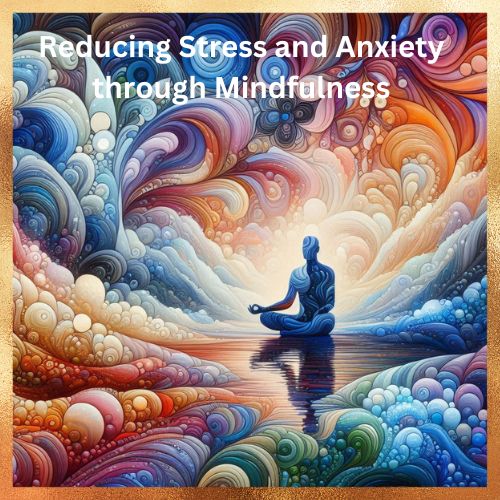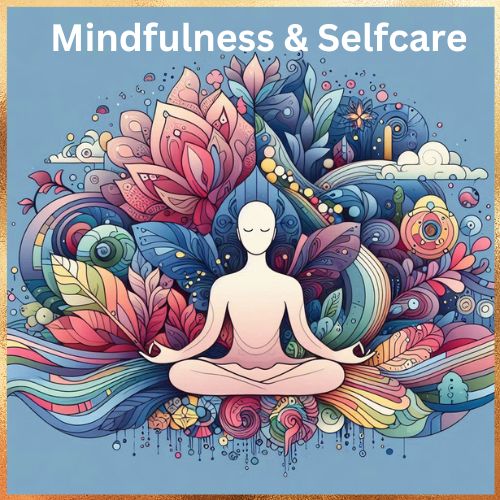Mindfulness practices such as deep breathing and body scanning activate the body’s relaxation response, a counter to the fight-or-flight response that stress and anxiety often trigger. This relaxation response lowers heart rate and blood pressure, helping the mind and body enter a state of calm.
Regular Mindfulness Practice
Regular mindfulness practice changes the way the brain processes stress and anxiety. By training the brain to focus on the present moment, mindfulness helps reduce the tendency to dwell on negative thoughts or worry excessively about future uncertainties. This present-focused approach makes it easier to acknowledge challenging emotions without becoming overwhelmed by them.

Make Mindfulness a Natural Habit
In daily life, practicing mindfulness equips you with tools to manage stress triggers before they escalate. For example, mindful breathing can be used during a tense meeting, body scanning can help ease tension after a long day, and mindful observation can be practiced when feeling anxious about upcoming tasks.
Over time, mindfulness becomes a natural habit, making it easier to maintain a calm, balanced state in even the most challenging situations. This resilience and inner peace fostered by mindfulness are powerful allies in managing modern-day stress and anxiety.
Pointwise Tips : Use Mindfulness to Reduce Stress and Anxiety
Here are some detailed, point-wise tips on using mindfulness to reduce stress and anxiety:
1. Practice Deep Breathing
- Technique: Focused deep breathing is one of the simplest mindfulness practices. Inhale slowly and deeply through your nose, filling your lungs, and exhale slowly through your mouth.
- Effect: Deep breathing signals your body to relax, helping to reduce cortisol (the stress hormone) and ease feelings of anxiety. It brings immediate calm, making it easier to respond thoughtfully to stressful situations rather than reacting impulsively.
2. Engage in Body Scanning
- Technique: Lie down or sit comfortably, and start focusing on different parts of your body, starting from your head down to your toes. Pay attention to any sensations, tightness, or discomfort, releasing tension as you go.
- Effect: This practice helps you become aware of physical tension stored in your body due to stress. Releasing this tension reduces physical symptoms of stress and promotes relaxation, improving mental clarity and focus.
3. Use Guided Meditation Apps
- Technique: Guided meditations on apps like Headspace or Calm help you follow a structured mindfulness session. These apps offer specific meditations for stress relief, anxiety management, and relaxation.
- Effect: Guided meditations can serve as a valuable tool for beginners and experienced meditators alike, providing structure that helps your mind to stay focused. They offer a calm, reassuring voice and imagery that make it easier to manage stress effectively.
4. Practice Mindful Observation
- Technique: Mindfully observe your environment by focusing on one thing at a time – a flower, the sound of rain, or a piece of art. Take note of the details, colors, sounds, and textures.
- Effect: Mindful observation helps ground you in the present moment, diverting your mind from anxieties about the future or regrets about the past. It’s a powerful way to interrupt stress-inducing thought patterns, creating a peaceful break in your day.
5. Perform Daily Mindful Activities
- Technique: Integrate mindfulness into daily tasks like washing dishes, walking, or eating. Focus on each movement, sensation, and feeling while doing these activities.
- Effect: By turning mundane activities into mindful practices, you train your brain to stay calm and present. It builds a habit of mindfulness, reducing stress responses over time and helping you deal with challenges more calmly.
6. Set Aside Time for Journaling
- Technique: Write down your thoughts, feelings, or stress triggers each day. Focus on expressing yourself without judgment, and let your thoughts flow onto the paper.
- Effect: Journaling serves as an emotional release, helping you process anxious thoughts and stressful events. It clarifies your mind and gives you perspective, enabling you to approach challenges with a calmer, more composed mindset.
Summarizing the Mindfulness and Self-care
Incorporating mindfulness into daily life is a powerful way to build resilience against stress and anxiety. By grounding ourselves in the present moment and practicing calm awareness, we gain greater control over our reactions to challenging situations.
Mindfulness helps create a mental space where we can respond thoughtfully rather than react impulsively, promoting emotional balance and clarity. Ultimately, by prioritizing mindfulness and self-care, we nurture our mental well-being, paving the way for a more peaceful, balanced, and fulfilling life.
You may also like to read: Mindfulness & Self-Care: Essential Practices for a Balanced Life

